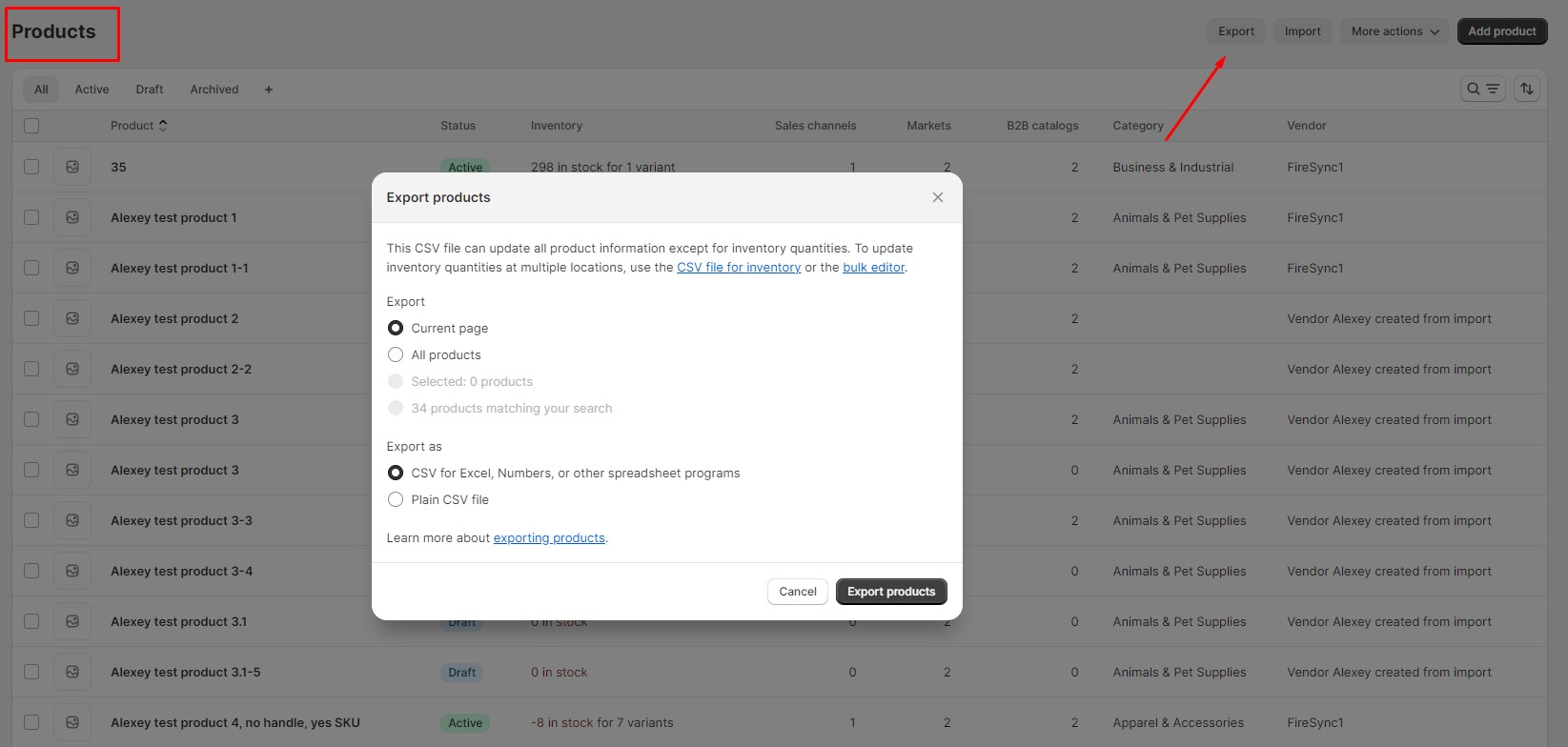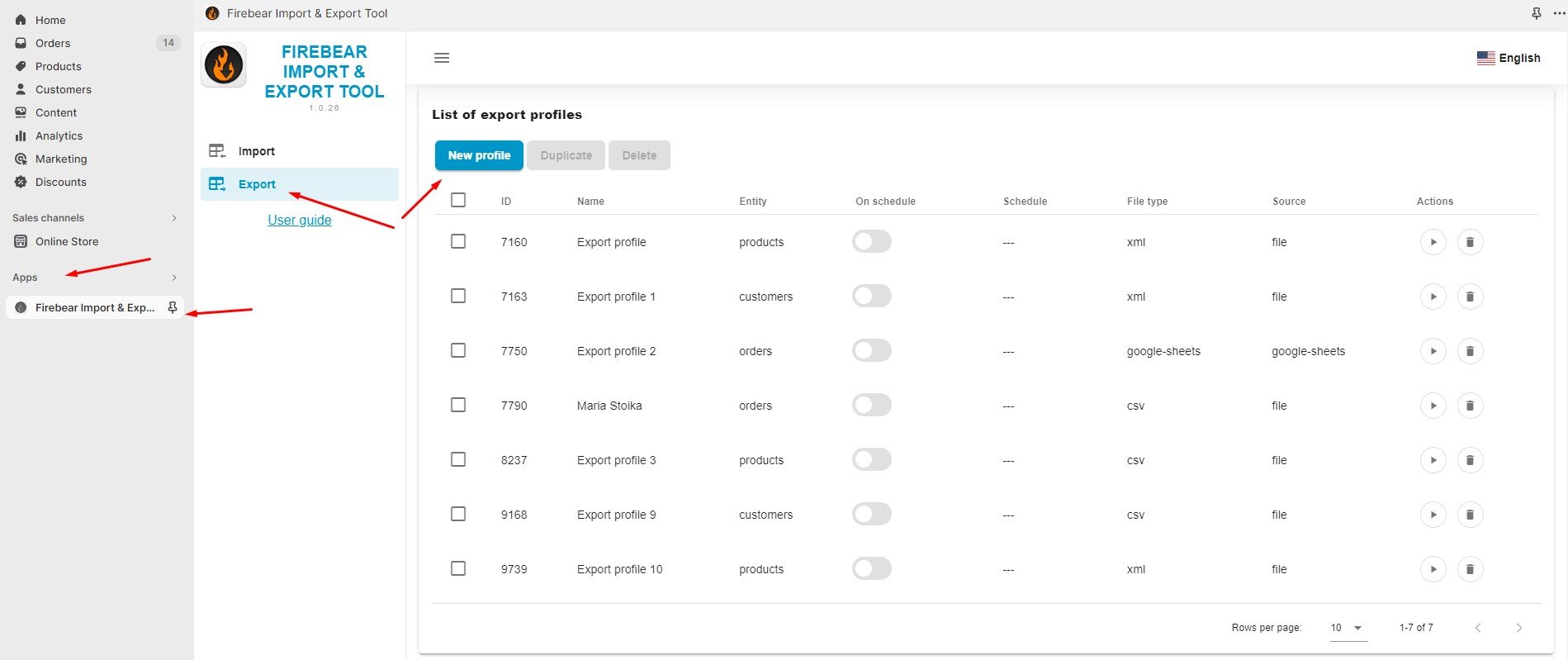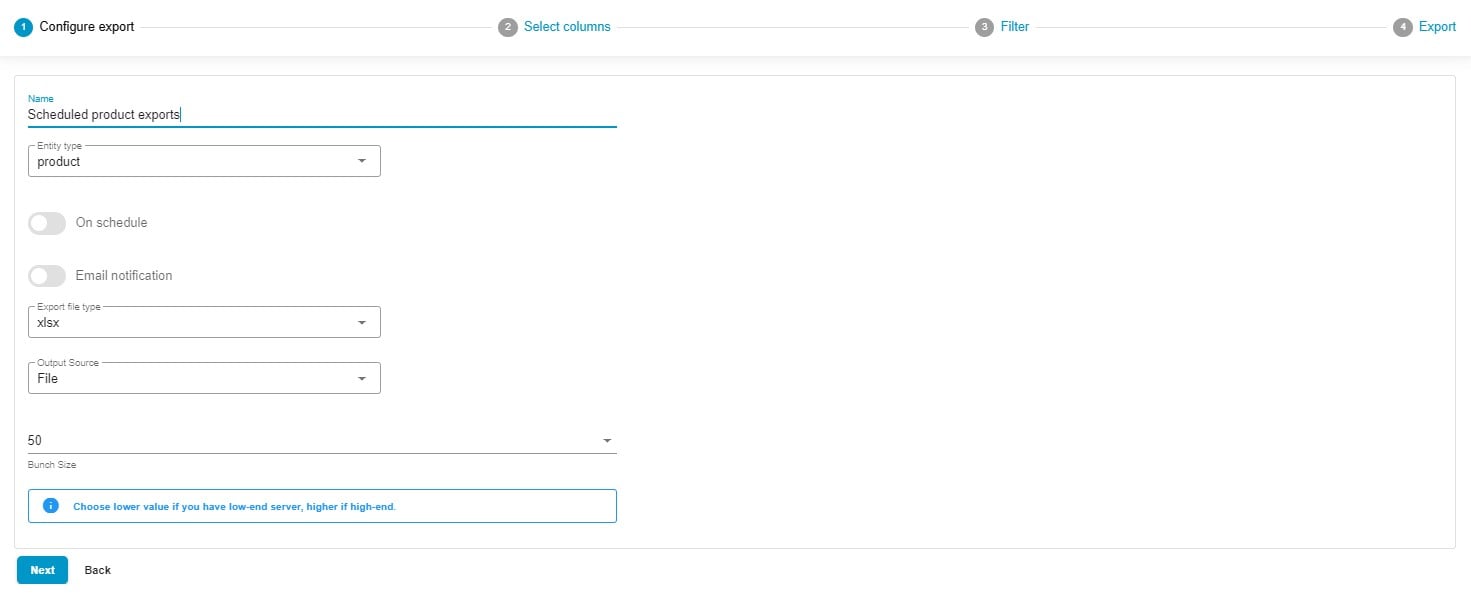Shopify Automation: Export
![]()
Efficient routine management is crucial for every business and e-commerce is not an exception, especially in the field of repetitive data transfers. The introduction of automation can make a significant difference here. Unfortunately, Shopify lacks native support for automated exports, requiring merchants to resort to manual procedures. While manageable for occasional updates, this becomes impractical for frequent transfers, like those occurring daily or hourly. But you can easily change that.
Meet the – a transformative solution that empowers you to implement Shopify automation for export processes. With its help, you will be able to schedule data exports based on your preferred intervals, whether hourly, daily, weekly, or monthly.
With Shopify export schedules configured, you no longer need to opt for time-consuming manual exports. This guide will navigate you through the process of automating your data exports in Shopify, ensuring efficiency and convenience. For additional insights, consult our Shopify Cookbook, and explore the broader spectrum of Shopify import automation for a holistic data management solution.

Table of contents
Default Shopify Export & Its Drawbacks
Shopify offers a default export tool that allows merchants to export data from their stores. While this tool is handy for basic export operations, it comes with certain limitations and drawbacks:

- Lack of Flexibility in Data Fields: The default export tool may not provide access to all the data fields you need. At the same time, it doesn’t let you alter the structure of exported files: you are bound to a predefined set of columns and often fields too, not to mention the strict order of the data you export.
- No Automation: The default export function typically requires manual initiation. Merchants cannot schedule exports at specific intervals, such as daily, weekly, or monthly.
- Limited File Format Support: The default tool may limit the choice of file formats for exports. While it commonly supports CSV, other formats like XLSX or XML are not available, not to mention Google Sheets.
- No Mapping: The default export tool lacks mapping features. You can not apply changes to your column names before a file is exported.
- Scalability Challenges: As a store grows and data complexity increases, the default export tool might struggle to handle larger datasets efficiently. This can result in slower export processes and potential performance issues.
To overcome these limitations, many Shopify merchants opt for third-party apps or tools, like the Firebear Import & Export Tool. Let’s see what advantages it offers.
The Advantages of Shopify Automation with Improved Import & Export Tool
The Enhanced Import & Export Solution for Shopify stands as a comprehensive remedy for the challenges associated with the absence of automation in standard import procedures. The tool tackles these issues in the following ways:
- Enhanced Efficiency: By automating the import process, the tool significantly reduces the time needed for data transfer. It facilitates imports at scheduled intervals, empowering you to update your store’s data as frequently as necessary.
- Error Mitigation: Automation eliminates the risk of manual errors, ensuring accurate and consistent data imports. This reduces the likelihood of inaccuracies in product listings, pricing, and inventory levels. The tool allows for mapping and the creation of mapping presets, facilitating the import of third-party data to your e-commerce platform.
- Optimized Resource Utilization: Shopify import automation liberates your team from repetitive manual tasks, enabling them to focus on more strategic activities that contribute to business growth.
- Efficiency for Dynamic Operations: For businesses with dynamic catalogs and frequent changes, the tool provides a scalable and efficient solution for managing ongoing data updates.
- Data Integrity Assurance: The Enhanced Import & Export Tool maintains data integrity by gracefully handling errors. It logs and reports any issues during imports, minimizing the risk of data loss, and providing insights into potential problems.
- Scalability: As your business expands, the tool adapts to handle the increasing complexity and volume of data imports, aligning with the evolving needs of your online store.
- Seizing Opportunities: The tool empowers you to act swiftly on opportunities, such as adding new products or adjusting pricing based on market trends or customer demand.
With the Enhanced Import & Export Tool for Shopify, you can streamline data management, reduce manual effort, and enhance data accuracy. The app delivers the agility and efficiency required to operate a competitive and responsive e-commerce business, ensuring your online store is always current and prepared to meet customer demands.
How to automate Shopify exports
With our Import & Export Tool for Shopify, you can implement Shopify automation for export processes as follows:
Step 1: Access the Export Profile
Create a new export profile:

- Go to your Shopify admin panel, Apps, and Firebear Import & Export Tool.
- Select “Export” and click on the “New Profile” button.
Step 2: Configure Export
You are on the “Configure export” screen. Here, set up your automated Shopify export as follows:

- Specify a name for your profile.
- Choose an export entity: products, customers, or orders.
- Enable the On Schedule toggle to create a schedule of updates:
– Specify your time zone.

– Select the starting frequency: every hour, day, week, or month;
– Hourly export: choose at what minute to start your data transfer processes;

– Daily updates: choose the time of the day to run Shopify export;

– Weekly updates: choose the day and time to initiate the data transfer;

– Monthly exports: select the date and time to begin the process.

- Configure email notifications to stay informed on the results of your automated exports.
- Select your preferred file format. Choose CSV, XML, XLSX, or Google Sheets.
- Choose your export source: file downloads, FTP transfers, or Google Drive exports.
- If you have a server with limited resources, you can choose a lower bunch size that suits your needs.
- Click “Continue” to proceed to the mapping screen.
Step 3: Configure Mapping
Now, you can configure mappings, replacing the default column names with the ones your partners require.

Furthermore, it is possible to deselect any columns that should be excluded from your automated Shopify exports.
Arrange columns in the desired order via a drag-and-drop interface. Select the column you wish to move to a new place and effortlessly drag it to the preferred location.
You can also incorporate default values. If a particular attribute lacks a value, assign a default value within the relevant section. The export file will then seamlessly incorporate the specified default value instead of any absent data.
Another good news is that you can save these parameters so that the app can use them for further data exports automatically. No manual interactions are required!
Step 4: Create Filters
Proceed to the next section to create filters. They can help you add only the necessary products, orders, or customers to your exported files:

- Add a Filter: Click the “+” button to add a filter.
- Select a Product Property: Choose a product property to define the filter criteria.
- Specify a Value: Provide the value that aligns with your chosen criteria.
- Create Multiple Filters: repeat these actions if you need more filters.
Step 5: Save and Export
Click the “Save & Close” button to save your Shopify export profile. It will be launched automatically according to the predefined schedule.

For more detailed information on the enhanced Shopify export capabilities associated with the app, refer to the Improved Import & Export Tool manual.
Other Features
Shopify merchants can enhance their data management capabilities through the robust features of the Firebear Import & Export Tool. This tool not only introduces Shopify automation for import and export processes but also presents a host of functionalities absent in the default Shopify toolkit. Unlike standard data transfer tools, this software offers numerous advantages for seamless data management, including:
- Comprehensive Product Handling: Effortlessly manage product data and custom properties to ensure your catalog stays current.
- Customer Data Management: Simplify the import and export of customer details for effective customer relationship management.
- Efficient Order Export: Extract valuable insights from transactions and sales analytics through streamlined export of order data.
- Accurate Data Mapping: Define precise data relationships for seamless integration into your Shopify store.
- Flexible Scheduling Options: Establish custom import and export schedules, automating data updates to align with your business requirements.
- File Format Versatility: Seamlessly work with CSV, XLSX, and XLSX files for smooth transitions of data.
- Google Sheets Integration: Facilitate collaborative data management by seamlessly transferring data between Shopify and Google Sheets.
- Direct File Uploads: Simplify the import and export of data files, promoting efficient data management.
- Secure FTP/FTPS Uploads: Ensure the security of data transfers with robust support for FTP/SFTP protocols.
- Google Drive Integration: Streamline data file uploads by seamlessly integrating with Google Drive.
These features provide precise control over your data, offering a comprehensive solution for managing your Shopify store on a completely new level with Shopify automation up your sleeve. For detailed information on the product and its features, please follow these links:

